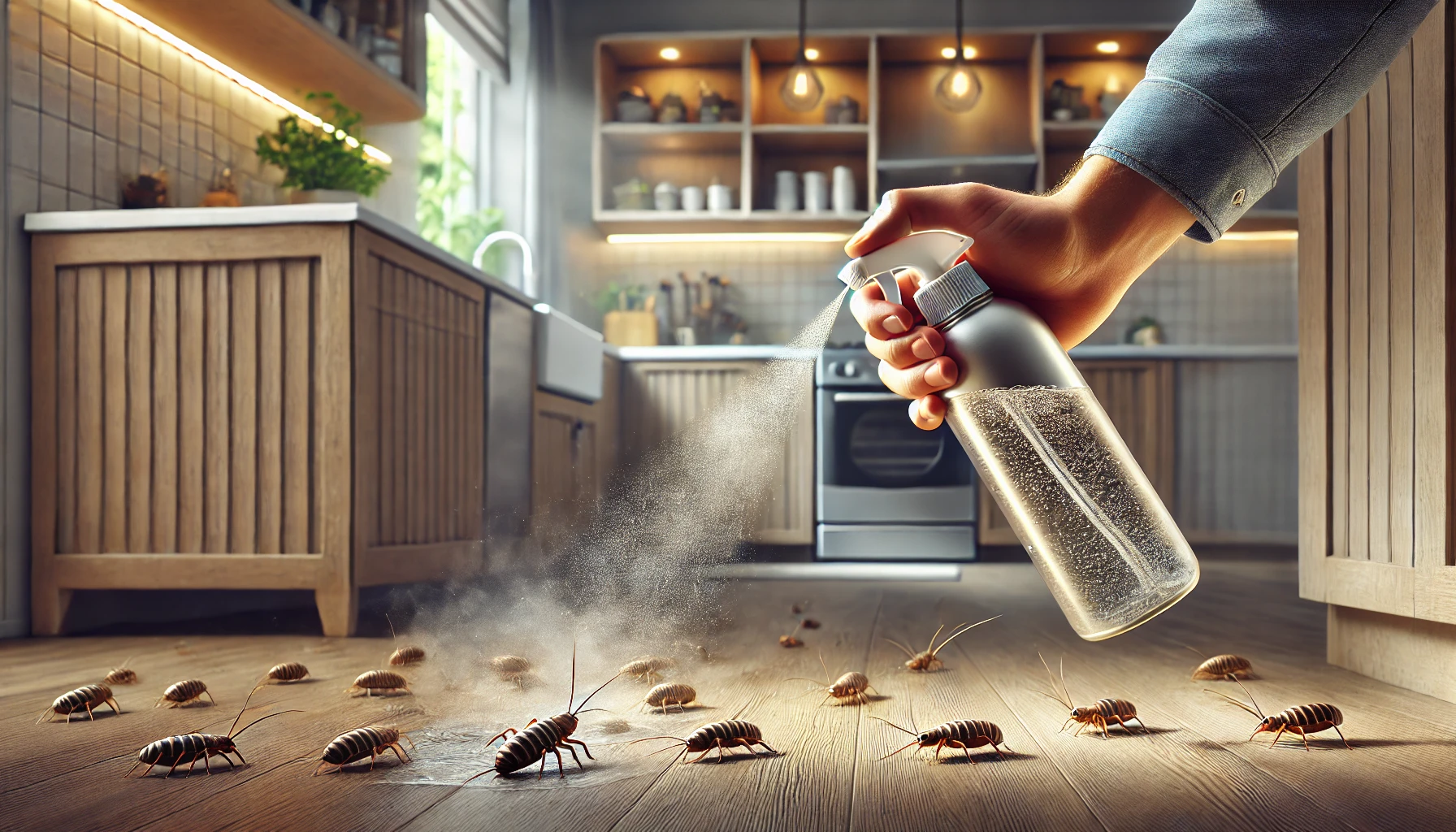Key Takeaways
-
Silverfish Identification: Frequent sightings and damage to paper or fabric signal a silverfish infestation.
-
Signs to Watch For: Molted skins, black droppings, and small holes indicate their presence.
-
No Human Harm: They don’t harm people but damage books, wallpaper, and clothes.
-
Entry Points & Causes: Silverfish enter through cracks and thrive in damp, cluttered spaces.
-
Effective Prevention: Control moisture, declutter, and seal gaps to prevent infestations.
-
Act Quickly: Treat infestations early or call pros to prevent costly damage.
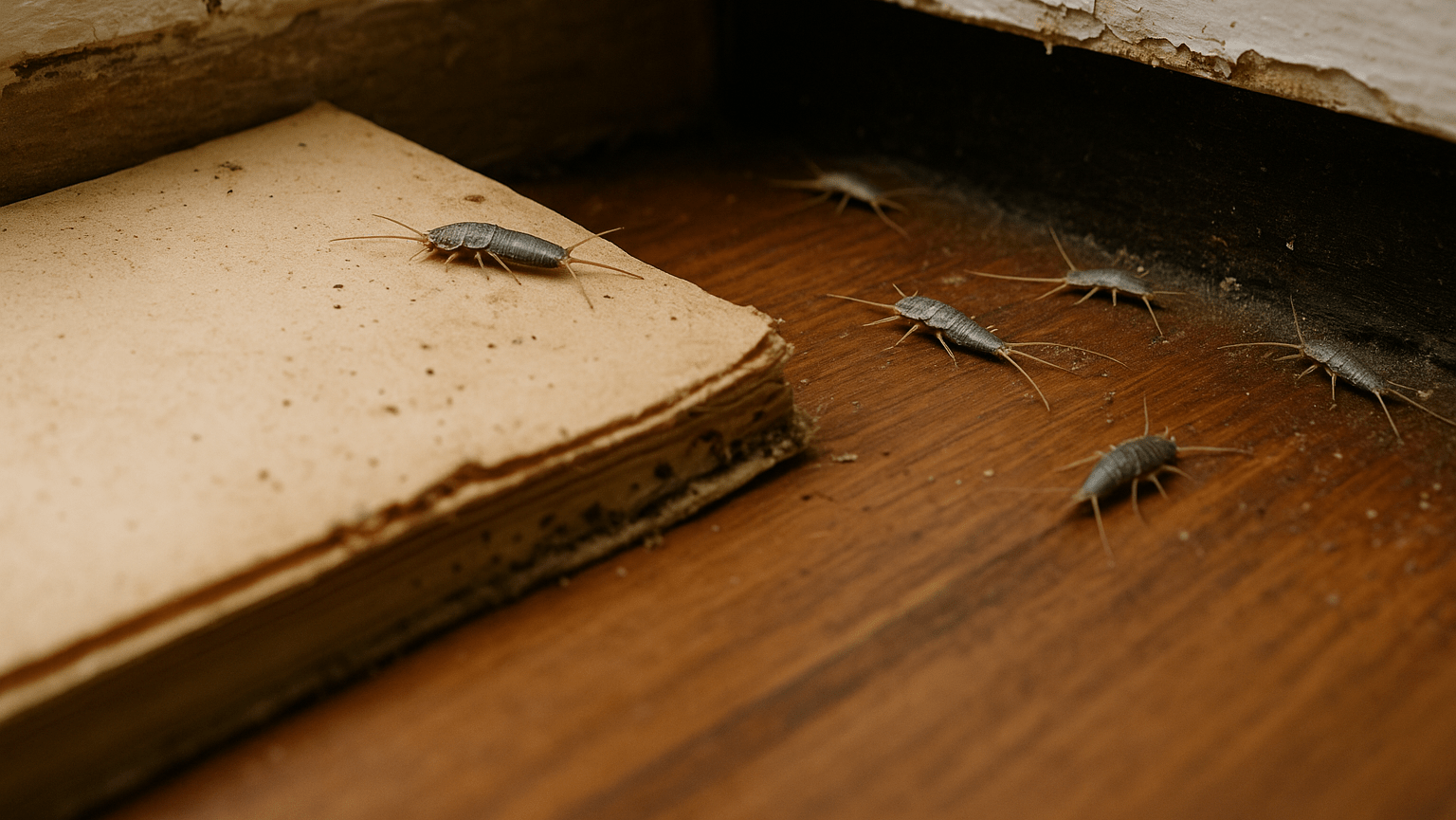 Silverfish are tiny, wingless insects that are often found in homes, particularly in dark, damp environments. While they aren’t harmful to humans, they can cause damage to household items such as paper, clothing, and food.
In this article, we’ll take a closer look at how to identify a silverfish infestation, the signs to watch for, and how to prevent silverfish from invading your home.
Not sure if silverfish are lurking in your home? Schedule your Free Pest Inspection today. Our experts can quickly assess and effectively handle any pest concerns you may have.
Silverfish are tiny, wingless insects that are often found in homes, particularly in dark, damp environments. While they aren’t harmful to humans, they can cause damage to household items such as paper, clothing, and food.
In this article, we’ll take a closer look at how to identify a silverfish infestation, the signs to watch for, and how to prevent silverfish from invading your home.
Not sure if silverfish are lurking in your home? Schedule your Free Pest Inspection today. Our experts can quickly assess and effectively handle any pest concerns you may have.
How Many Silverfish Is an Infestation?
Seeing one or two silverfish doesn’t necessarily mean you have a full-blown infestation, but it could be a warning sign. You may be dealing with an infestation if you notice several silverfish in different parts of your home, especially in damp areas like bathrooms, kitchens, or basements. Silverfish reproduce quickly, and spotting multiple insects within a short period is a strong indicator that you have more than just a few pests on your hands. Aside from seeing them, other signs of a silverfish infestation include damage to items like wallpaper, book bindings, cardboard, and clothing, as silverfish feed on starch-based materials. You might also find their molted skins or small black pepper-like droppings, which are common near their hiding spots. These are clear indications that silverfish have made themselves at home.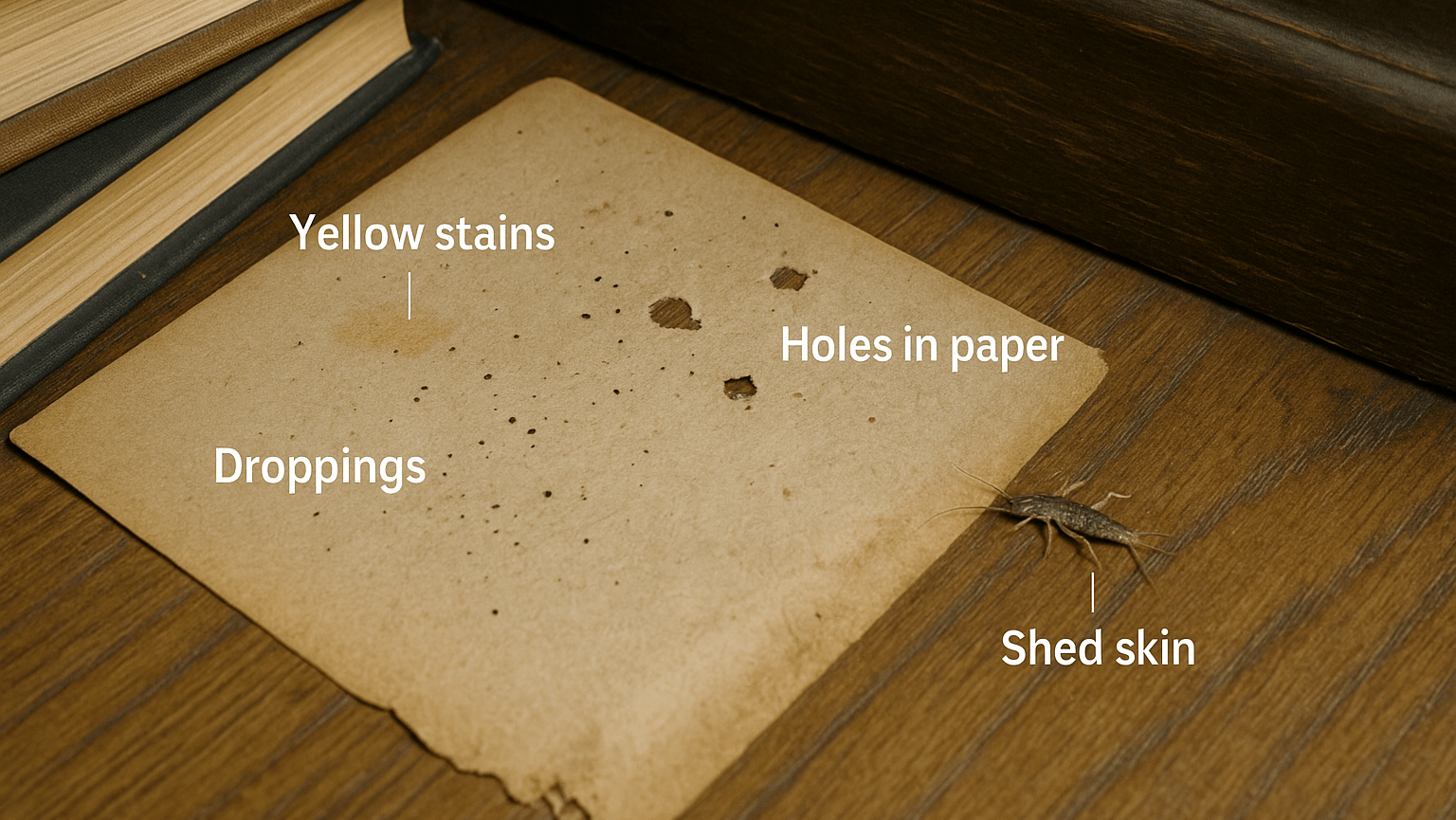

Not getting a solution?
Get your free pest control estimate today!Signs of a Silverfish Infestation
-
Frequent Sightings: Seeing silverfish regularly in areas like the bathroom, kitchen, or basement suggests an active infestation.
-
Damage to Household Items: Silverfish chew through paper, books, wallpaper, and fabric—look for small holes or irregular damage as a key indicator.
-
Feces and Exoskeletons: Their droppings resemble tiny black pepper-like specks, and shed skins are often found in corners or near infested items.
-
Moisture and Humidity: Silverfish thrive in damp, humid spaces—high moisture areas like basements and bathrooms are prime infestation zones.
What Does a Silverfish Bite Look Like?
One common question people have is whether silverfish bite humans. The good news is that silverfish do not bite people or pets. They may look creepy, but they pose no direct threat to humans. However, they can cause noticeable damage to household items. Their feeding habits often involve scraping surfaces, leading to chewed-up papers, damaged clothes, and ruined wallpaper. If you notice these signs around your home, it’s a strong indication that silverfish are present, even if you haven’t seen them directly. Also, check: Can Silverfish infest my hair?
How Do You Get Silverfish?
Silverfish are attracted to environments that offer moisture, warmth, and abundant food sources like starches, sugars, and proteins. Homes with high humidity levels or areas where paper products and fabric are stored are particularly inviting to these pests. Silverfish are often drawn to leaky pipes, damp basements, or cluttered storage areas where moisture is present. They can also find their way into homes through old books, cardboard boxes, or paper that has been in storage for long periods. Once silverfish find a comfortable environment with enough food and moisture, they can multiply rapidly, turning what might have started as a few pests into a more significant problem. Controlling humidity and keeping storage areas tidy are key to preventing an infestation.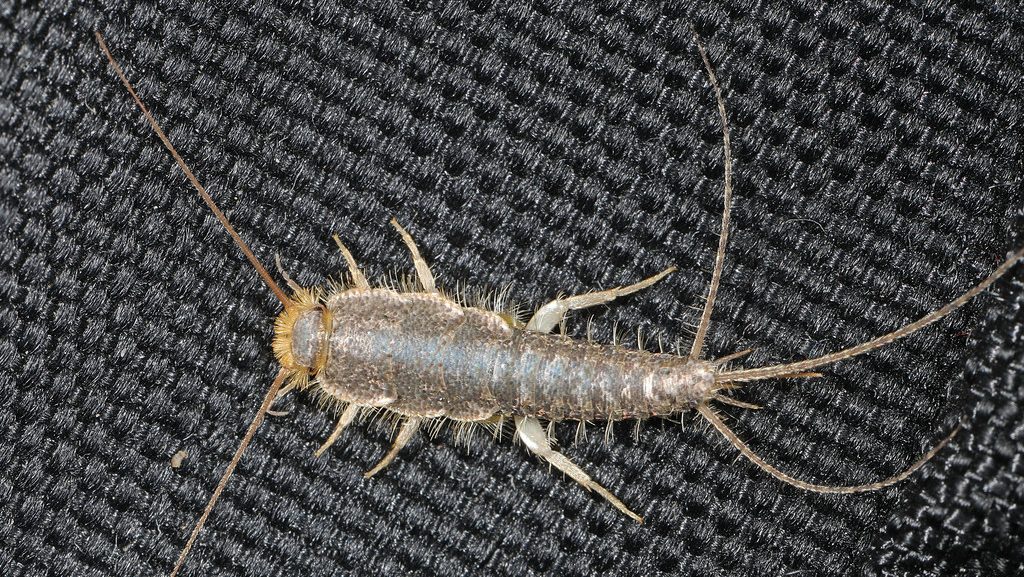
How Do Silverfish Get in the House?
Silverfish are skilled at sneaking into homes through small gaps in doors, windows, and foundations. They often enter undetected, especially in humid areas like kitchens and bathrooms. These pests are also known to travel via items brought into the home, such as old books or storage boxes, making it easy to introduce them without realizing it. To keep silverfish out of your home, check for any potential entry points, including small cracks in walls or foundations. Keeping storage areas clean and dry will reduce the chances of bringing them inside. Regularly check for moisture buildup and ensure that leaky pipes or faucets are promptly repaired, as these damp areas can attract silverfish.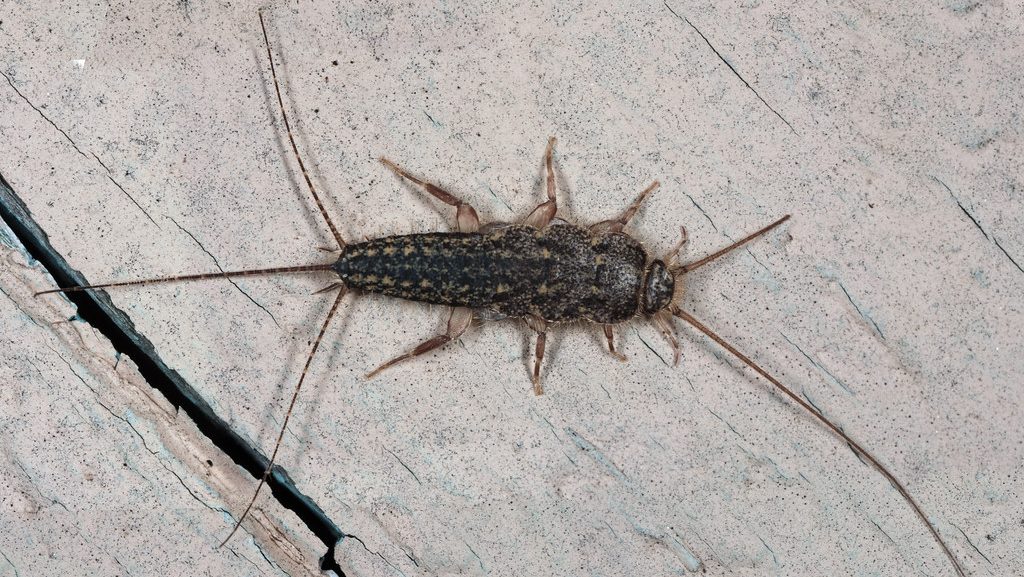
How to Know If You Have a Silverfish Infestation
There are several signs to help you identify if you have a silverfish infestation. First and foremost, you may notice the insects themselves, especially in dark or damp areas of the home. Since silverfish are nocturnal, you’re more likely to see them scurrying around at night when you turn on a light. Another common sign is yellowish stains on surfaces where silverfish have been feeding. Chewed-up items such as books, clothing, wallpaper, or cardboard are also clear indicators of an infestation. Silverfish often scrape away at these materials, leaving behind noticeable damage. Additionally, their molted skins can be found in areas they frequent. If you discover any of these signs, it’s likely that silverfish are present in your home, and the infestation may already be advanced.